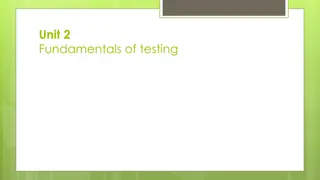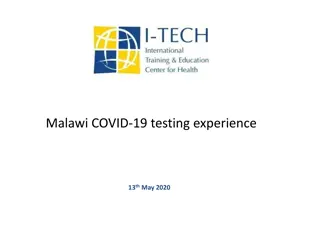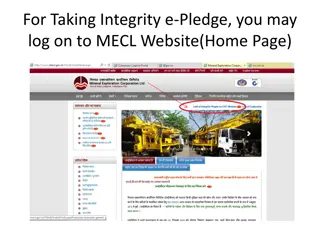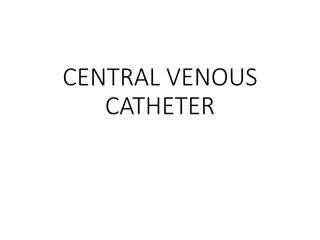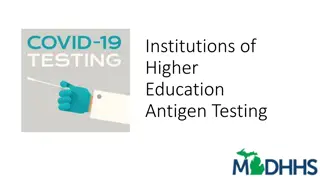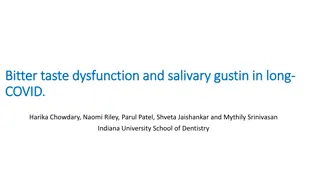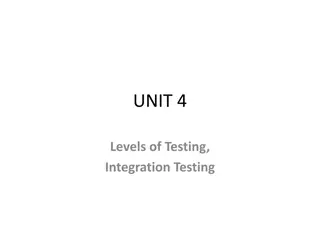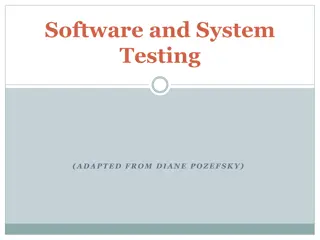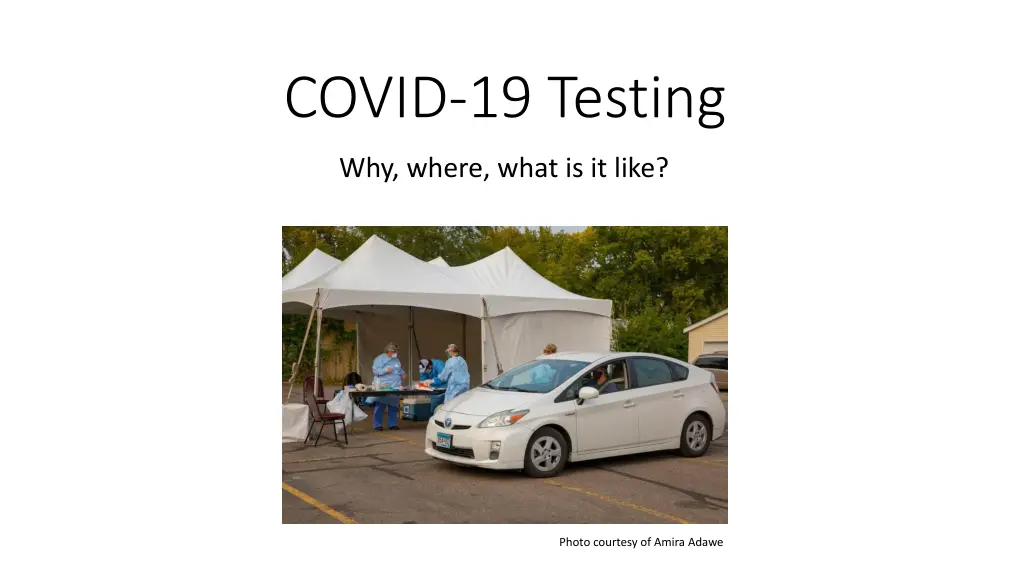
Comprehensive Guide to COVID-19 Testing: Importance, Process, and Locations
Learn all about COVID-19 testing - why it's crucial, who should get tested, accuracy, cost, process types, result timelines, and nearby testing locations. Get informed and stay safe.
Download Presentation

Please find below an Image/Link to download the presentation.
The content on the website is provided AS IS for your information and personal use only. It may not be sold, licensed, or shared on other websites without obtaining consent from the author. If you encounter any issues during the download, it is possible that the publisher has removed the file from their server.
You are allowed to download the files provided on this website for personal or commercial use, subject to the condition that they are used lawfully. All files are the property of their respective owners.
The content on the website is provided AS IS for your information and personal use only. It may not be sold, licensed, or shared on other websites without obtaining consent from the author.
E N D
Presentation Transcript
COVID-19 Testing Why, where, what is it like? Photo courtesy of Amira Adawe
Objectives When completed, you will be better able to: Explain the importance of testing Describe COVID-19 testing basics who, accuracy, length, cost Explain the COVID-19 testing process Identify nearby testing locations Describe case investigation and contact tracing
Why is COVID-19 testing important? COVID-19 affects people of all races and ethnicities. Testing is an important public health response to COVID-19 because it identifies those who are sick. Then these individuals can stay away from others to keep them from getting sick as well.
Who should get tested? People who have symptoms People who have come into close contact with someone with COVID-19 Unvaccinated who likely have been exposed through travel, large gatherings, or crowded indoor locations Photo courtesy of Amira Adawe
How accurate is COVID-19 testing? Accuracy can vary based on factors including the test type and duration of illness but is roughly 90-100%. Photo credit: https://www.cdc.gov/vaccines/ed/patient-ed.html
How long to get results? It depends on the test type and if the labs are backed up. Rapid tests can provide results in just 15 minutes. Usually you get results within a few days. Photo courtesy of Amira Adawe
How much does it cost? COVID-19 testing is available at no-cost or low cost to everyone in the US, even those without insurance. Photo credit: https://www.cdc.gov/vaccines/covid-19/index.html
What is the testing process? There are four ways to get tested: 1. nostril 2. saliva 3. back of the throat 4. deep inside the nose Some individuals experience discomfort with the deep nasal swab. If you prefer to not have deep nasal swab, you can take a different test.
Testing process (continued) If you get tested at a clinic: Your health care provider will test you. It will be sent to a lab. The lab sends the results back to your provider. Your provider will call you with the results. If you get tested at a community-based testing site: A community worker will collect your name and contact information. They will share health education material with you. Your test will be done by a healthcare provider or public health practitioner who is from the clinic and local government. It will be sent to a lab. The lab sends the results back to the health care provider and the City or County Health Department. You will hear from the community-based organization that co-organized the test and the City or County Health Department.
Where can I be tested? Community-based sites as well as local clinics. Many people, especially communities of color, prefer to get tests from a community site. Talk to your trust community-based organization or community leaders to help you find the nearest testing site. Or ask your healthcare provider. Search for community testing site at the US Health and Human Services Department here: https://www.hhs.gov/coronavirus/community-based-testing- sites/index.html Search for your state health department website Search for your local health department website https://www.naccho.org/membership/lhd-directory Image credit: https://www.cdc.gov/vaccines/covid-19/index.html
Case investigation and contact tracing These are used to slow the spread of COVID-19 Case investigation If you test positive for COVID-19, an investigator may ask you questions about how you may have been infected and who you may have infected. Contact tracing the Health Department may follow up with anyone who came into contact with an infected person including your workplace, your home, places visited, parties you attended. If English is your second language, ask for an interpreter and someone that understands your culture. You can call your local community-based organization to help you with the process.
Activity - Discussion 1. If you know someone who has been tested, what was it like? 2. What are some reasons to be tested? 3. What are some reasons to be hesitant? 4. What barriers are there to testing for people in your community?
Acknowledgement The Midwest Consortium developed this course under cooperative agreement number U45 ES 06184 from the National Institute of Environmental Health Sciences for community members who may be impacted by COVID-19.
Resources CDC https://www.cdc.gov/vaccines/covid-19/index.html US Health and Human Services Department (community test sites): https://www.hhs.gov/coronavirus/community-based-testing-sites/index.html Local health department website locator: https://www.naccho.org/membership/lhd-directory


